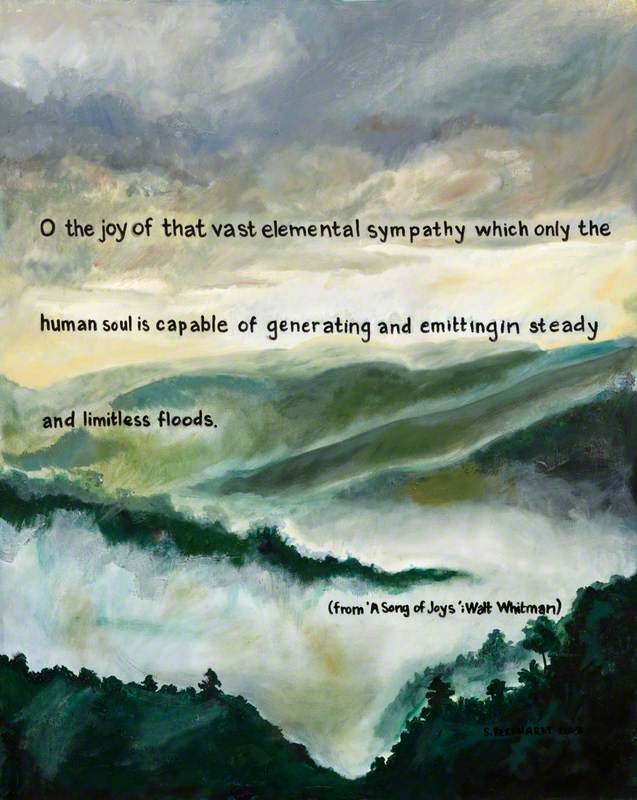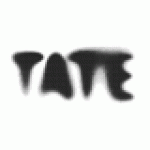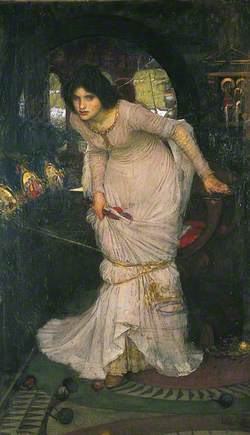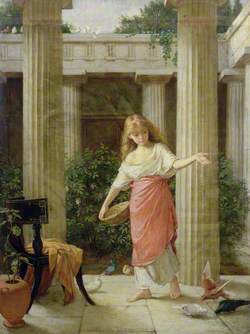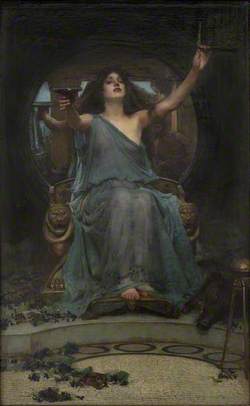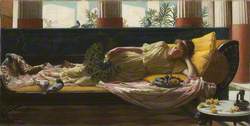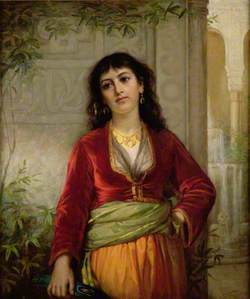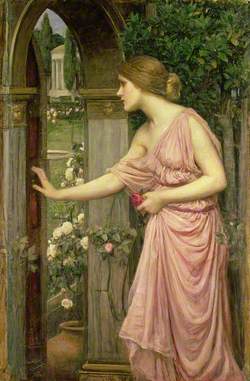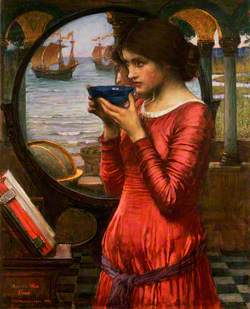How you can use this image
This image is available to be shared and re-used under the terms of the Creative Commons Attribution-NonCommercial-NoDerivatives licence (CC BY-NC-ND).
You can reproduce this image for non-commercial purposes and you are not able to change or modify it in any way.
Wherever you reproduce the image you must attribute the original creators (acknowledge the original artist(s) and the person/organisation that took the photograph of the work) and any other rights holders.
Review our guidance pages which explain how you can reuse images, how to credit an image and how to find more images in the public domain or with a Creative Commons licence available.
DownloadNotes
Add or edit a note on this artwork that only you can see. You can find notes again by going to the ‘Notes’ section of your account.
The picture illustrates the following lines from part IV of Tennyson's 'The Lady of Shalott': 'And down the river's dim expanse Like some bold seer in a trance, Seeing all his own mischance – With glassy countenance Did she look to Camelot. And at the closing of the day She loosed the chain, and down she lay; The broad stream bore her far away, The Lady of Shalott'. Tennyson's poem, first published in 1832, tells of a woman who suffers under an undisclosed curse. She lives isolated in a tower on an island called Shalott, on a river which flows down from King Arthur's castle at Camelot. Not daring to look upon reality, she is allowed to see the outside world only through its reflection in a mirror. One day she glimpses the reflected image of the handsome knight Lancelot, and cannot resist looking at him directly.
Waterhouse shows her letting go the boat's chain, while staring at a crucifix placed in front of three guttering candles. Tennyson was a popular subject for artists of this period, particularly the Pre-Raphaelites. Waterhouse's biographer Anthony Hobson relates that the artist owned a copy of Tennyson's collected works, and covered every blank page with pencil sketches for paintings. The landscape setting is highly naturalistic; the painting was made during Waterhouse's brief period of plein-air painting. The setting is not identified, although the Waterhouses frequently visited Somerset and Devon. The model is traditionally said to be the artist's wife.
Waterhouse's sketchbook contains numerous pencil studies for this and the painting of the same title made six years later (1894, Leeds City Art Gallery). This second work shows the Lady at the moment she looks out of the window and the curse is fulfilled. Waterhouse also made sketches of the final scenes in which the boat bearing the Lady floats into Camelot. 'The Lady of Shalott' is one of the original paintings from the gift of Sir Henry Tate.
Further reading: Anthony Hobson, 'The Art and Life of J. W. Waterhouse RA 1849–1917', London 1980, pp.pp.51–56, 183, reproduced pp.54–55 in colour Anthony Hobson, 'J. W. Waterhouse', Oxford 1989, pp.40–41, 53, 77, 109, reproduced p.42 in colour Terry Riggs February 1998
Title
The Lady of Shalott
Date
1888
Medium
oil on canvas
Measurements
H 153 x W 200 cm
Accession number
N01543
Acquisition method
presented by Sir Henry Tate 1894
Work type
Painting
Inscription description
date inscribed
Tate Britain
Millbank, London, Greater London SW1P 4RG England
Stories
-
 'The Lady of Shalott': an Arthurian legend in Cornwall
'The Lady of Shalott': an Arthurian legend in CornwallNatalie Rigby
-
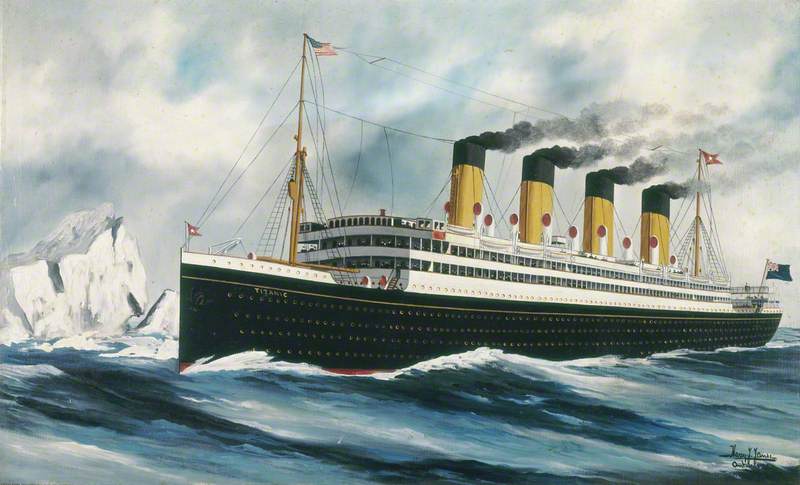 Art in the movies: the sequel
Art in the movies: the sequelMolly Tresadern
-
 Tennyson: the favoured subject
Tennyson: the favoured subjectThomas Marks
-
